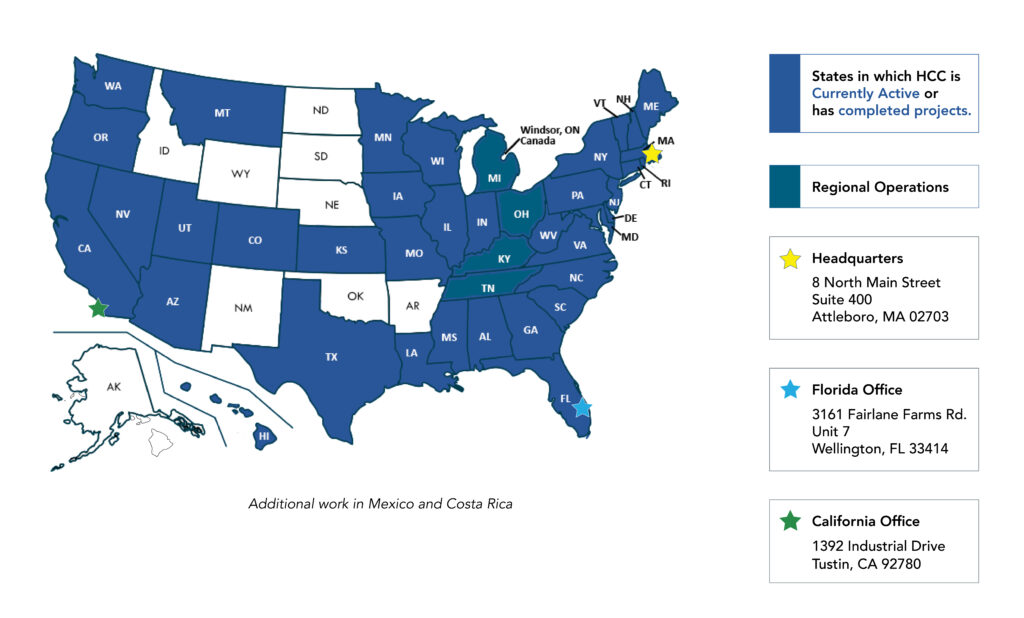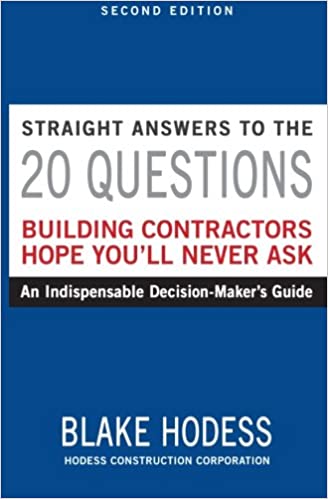
We provide turnkey cleanroom design and build services. As an extension of your internal team, we work closely with you during the entire process. Our cleanroom management team will keep you in the loop during key phases of your project so that there are no surprises that can affect your timeline or
your budget.
Before the cleanroom construction process begins, we analyze your program requirements and help you determine the level of cleanliness necessary and the type of cleanroom that will suit your budget and your needs.
Once approved, we proceed with a phased approach that goes as follows:
Phase 1: HCC proceeds to 30% design stage and establishes a guaranteed maximum price and schedule for your project.
Phase 2: We then review the cleanroom design with you and take it to 60% of the design phase.
Phase 3: The design is reviewed again and we go ahead with 100% construction and documentation.
We work with select architects and cleanroom engineers in order to provide stamped documents, code analysis, structural design and all services required for the complete installation of a cleanroom of any size or type, as well as for all related structures and systems.
Prior to design, we work with you to create an all-in-one program in collaboration with the architect and engineer, who work directly for us. We believe this benefits our clients in multiple ways:
Hodess Cleanroom Construction prides itself on consistently providing project and construction managers with exceptional cleanroom construction experience. Our cleanroom management team has decades of experience, not only with controlled environments, but also with general construction experience. Every project receives a dedicated superintendent for the entire project duration.
During the bidding process, HCC provides upfront organizational charts with key personnel. From project award through completion, you will be supplied a robust team who have the most up-to-date training and cleanroom technologies.
With our cleanroom management team, you can expect full support, plus weekly project and schedule meetings, twice-weekly look-aheads, monthly budget meetings and consistent updates throughout the project. As a result, our cleanroom managers and superintendents are committed to providing safe work environments. All of our key personnel have a minimum of OSHA 30 hour training. We maintain an EMR of .86 or less. We are enrolled with ISNetworld, and have an A grade.

 Automotive
Automotive Battery Plants
Battery PlantsA cleanroom envelope is the construction of the cleanroom walls, floors and ceilings without the full mechanical, electrical, and process typically under the control of the cleanroom contractor. The cleanroom envelope is typically a subcontract integrated into an entire building project where a construction manager or general contractor is providing the mechanical, electrical and process services to the cleanroom, and the envelope contractor must integrate with the general contractor and his subcontractors.
A complete modular cleanroom is typically built with the walls as a modular system, a plenum supported by the modular walls, ceiling system supported by the plenum cap, and fan filters driving air through the modular cleanroom. Modular cleanrooms can be applied to both small and large facilities. The cost effectiveness to modular cleanrooms varies depending on the type of facility and the magnitude of space in which the modular cleanroom is applied. Modular cleanrooms typically provide a more standardized package and modular components tend to cost more than stick built but save on field installation labor.
Plan and specification cleanrooms typically provide full sets of drawings and documentation, which are available for the cleanroom contractor to put a hard number on and to take for permitting. In the plan and specification mode, the analysis of your requirements, the cleanroom requirements and the variables have been done by a third party and not the cleanroom construction contractor.
Stick-built modular cleanrooms combine the stick-built and modular approaches. The use of modular walls as either the primary perimeter or as a lining on a stick-built system allows the benefits of a stick-built approach, creating a sealed perimeter to the cleanroom and a fire rated perimeter in many cases. All the while using the cleaner, less shedding surfaces of modular panels. In today’s market, modular panels consist of various products, including:
Cleanrooms are built with smooth, hard and easily cleanable surfaces to minimize contamination. Walls, ceilings and floor systems are all designed to minimize internal particulate. Temperature control, humidity control, static control, and sound and light levels are all critical factor.
Another key factor is the way air enters, is filtered, circulates and leaves a cleanroom. Outside air is filtered to exclude particulates, and the air inside is constantly circulated through High Efficiency Particulate Arrestors (HEPAs) and/or Ultra Low Particulate Arrestors (ULPAs) to remove internally generated contaminants.
People are the largest particle producer in a cleanroom and many precautions are made to protect the product. Personnel enter and leave cleanrooms first through gowning rooms, then often through airlocks by following strict cleanroom standards. They wear protective clothing such as coveralls, hairnets, facemasks, booties and gloves. Materials and equipment are next in line as generators of contamination, which limits what they can be made out of when used in a cleanroom.
The cleanliness level of a cleanroom is typically set at the beginning through the cleanroom design analysis and depends on the product to be made. In some cases, particulates can have a crucial impact on the performance of the product. In other cases it can contaminate the product. The various cleanroom types, cleanroom air delivery systems, and analysis of the process and the design help determine the level of cleanliness to be accomplished.
With today’s cleanroom technology, they are tending to certify at least one classification cleaner at rest than specified. However, the amount of air used to certify a cleanroom as specified in the ISO standards can vary. A facility’s energy savings, which helps the competitive nature of businesses, depends on the type of process used and the protocol maintained. These savings can be accomplished by specifying different levels of cleanliness or operating systems in such a manner that the level of cleanliness maintained meets the qualifications, but uses control systems such as particulate counters, to maintain but not exceed the cleanliness level.
Cleanrooms are typically energy inefficient compared to standard building systems. This is because pressure, temperature, humidity, particulate levels, light levels, static levels, sound levels, vibration levels and other criteria can critically impact the performance of the product being made in the cleanroom. Controls are employed through the mechanical, electrical and process systems to ensure that systems do not impact the product and, in fact, in many cases enhance the product. As a result, the tighter control means more energy expended to control these variables.
There are three primary mechanical systems for cleanrooms:
This system directly ducts the air to the HEPA filters but uses a plenum, either constructed for this purpose or via the building envelope, to allow air to return from the room returns to the air handler with limited or no duct work.
This system involves pressurizing a prefabricated plenum or stick-built plenum with a ceiling that creates a pressurized zone containing the HEPAs and supplying the air to the room. The return plenum is used with limited to no duct work.
Q: What’s the best measure of a construction company?
A: A straight answer.
The next question is, how can you make sure you’re getting straight answers when you’re interviewing contractors for a building project? After all, the selection process is so complicated that it’s easy for even the most sophisticated, experienced decision-maker to have a blind spot or two. That’s why every decision-maker should have a copy of Straight Answers to the 20 Questions Building Contractors Hope You’ll Never Ask by Blake Hodess, CEO of Hodess Cleanroom Construction, a division of Hodess Construction Corporation.
Blake has pooled the wisdom from interviewing dozens of owners to focus on the 20 critical questions that decision-makers should ask, along with some time-tested straight answers to these questions.
Straight Answers provides a valuable, insider’s guide to the decision-making process. It serves as a handy, real-world, pre-decision checklist to help you avoid all the headaches and financial woes you can get when you hire the not-quite-right contractor. And it can help ensure that you ask the right questions—and get the right answers—so you end up with the right contractor for your project.
